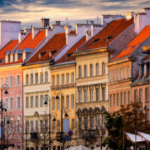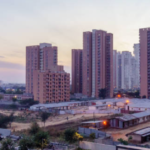In today’s fast-paced world, everyone seems to be in a rush. From work deadlines to social media notifications, it can often feel like life is moving too quickly. This rush doesn’t end when we travel. For years, the tourism industry has emphasized the importance of seeing as many places as possible in as little time as possible, pushing travelers to book fast-paced tours, rush through cities, and check items off a bucket list. However, a new trend is emerging that’s changing the way we approach travel: slow travel.
Slow travel is all about savoring the journey rather than racing to the next destination. It encourages travelers to spend more time in each place, take a slower pace, and immerse themselves in the local culture. In this blog post, we’ll explore why slow travel is not just a trend, but a more rewarding, sustainable, and meaningful way to experience the world.
What is Slow Travel?
Slow travel is the opposite of mass tourism. It’s about taking your time, connecting with the people, culture, and environment of a destination, and focusing on quality rather than quantity. Instead of jumping from one tourist hotspot to the next, slow travelers spend several days, weeks, or even months in a place, allowing themselves to explore deeply and thoughtfully.
While fast-paced touring might focus on cramming as many activities into a short time frame, slow travel encourages travelers to relax and savor every moment. It’s about enjoying the local food, learning the language, understanding the history, and even forming connections with the community.
1. Slow Travel Supports Sustainable Tourism
One of the most significant benefits of slow travel is its focus on sustainability. By staying in one location for a longer period, you are reducing the environmental impact of constant travel. For example, frequent flights and rapid transportation contribute to increased carbon emissions, which harm the environment.
By choosing to travel slowly, you help decrease your carbon footprint. Instead of hopping on a flight every few days, slow travelers often prefer slower forms of transportation, such as trains or buses. These options are more eco-friendly and provide a more scenic way to travel.
Moreover, slow travelers often prefer locally-owned accommodations, restaurants, and businesses, helping to support the local economy. By staying in one place for longer, you give back to the community by purchasing locally-made goods, dining at independent eateries, and taking part in cultural experiences.
2. You Get to Know the Place and Its People
When you rush through a destination, it’s easy to miss out on the deeper cultural experiences that make a place unique. With slow travel, you have the opportunity to form genuine connections with the people you meet. Instead of simply visiting landmarks, you have time to engage with locals, learn about their traditions, and get a real sense of what life is like in the area.
For example, you might spend an afternoon chatting with a local café owner, learning about the area’s history from an elderly resident, or joining in on a community event. These experiences help you develop a deeper understanding and appreciation of the place, making your trip far more enriching.
Slow travel encourages a more authentic form of tourism, where the focus is not just on sightseeing, but on experiencing life through the eyes of the people who call the destination home.
3. A More Relaxing and Stress-Free Experience
Traveling can be stressful, especially when you’re constantly rushing to the next destination. The pressure to see everything on a tight schedule can lead to exhaustion and burnout. In contrast, slow travel promotes a more laid-back approach, allowing you to take your time and truly enjoy the moment.
With slow travel, you don’t need to worry about catching the next train or rushing to check off the sights. Instead, you can wake up when you want, explore at your own pace, and take breaks whenever you feel like it. It’s about savoring the journey, not just the destination.
This more relaxed pace also leads to better mental and emotional health. By slowing down, you allow yourself the time and space to recharge, reducing travel-induced stress. You may even find that you return home feeling more refreshed and rejuvenated than after a whirlwind tour.
4. Slow Travel is More Affordable
While slow travel may sound like it involves more time, it can actually be more affordable than fast-paced touring. When you stay in one place for longer, you often save money on transportation costs. For example, you can book a longer-term rental, which is often cheaper than staying in hotels every few nights. Additionally, you may be able to cook your meals instead of dining out for every meal, further reducing your costs.
In some cases, slow travelers choose to volunteer or work while traveling. This allows them to cover accommodation and meal costs while gaining a deeper understanding of the local culture. If you’re planning a long trip, you might even look into programs where you can exchange your skills for accommodation, like teaching English or helping with local agriculture.
Moreover, slow travel helps you avoid the impulse to overspend on pricey tours, souvenirs, or attractions. When you take the time to explore a destination, you can uncover hidden gems that are more affordable and often more memorable than major tourist attractions.
5. Helps You Build Meaningful Memories
Fast-paced travel often leads to fleeting memories—snapshots of the most famous attractions or moments. In contrast, slow travel allows you to focus on the small, meaningful experiences that truly make a trip special. It’s about forming lasting memories, not just checking things off your list.
You might remember the long walk you took through a quiet park, the spontaneous conversation you had with a local, or the delicious meal you shared with new friends. These moments of connection, discovery, and joy become the highlights of your trip, making it a far richer experience than rushing from one place to another.
6. The Rise of Digital Nomadism and Slow Travel
The rise of the digital nomad lifestyle has made slow travel even more accessible. As more people work remotely, they are able to spend extended periods in new locations without being tied to an office. This has led to an increase in travelers who prefer to spend months in one place, working while exploring.
For digital nomads, slow travel provides the opportunity to experience a destination in depth without the pressure of a typical tourist schedule. Whether it’s renting an apartment in a foreign city or spending time in a remote village, the digital nomad lifestyle aligns perfectly with the principles of slow travel.
However, even for those not working remotely, slow travel has become easier with the help of technology. For instance, travelers can book long-term stays through platforms like Airbnb, which offer more flexibility and comfort than traditional hotels.
7. Practical Tips for Embracing Slow Travel
If you’re new to slow travel, here are a few tips to help you get started:
- Plan Your Trip, but Leave Room for Flexibility: While you should have a general plan, allow for flexibility in your schedule. If you fall in love with a place, stay longer. If you feel like moving on sooner, do so.
- Dummy Ticket for Visa: If you’re applying for a visa to visit a country, some visa authorities may require proof of your travel plans. A dummy flight ticket for visa purposes can be a useful tool for this, giving you the flexibility to plan your trip without booking a non-refundable flight.
- Choose Destinations with Slow Travel in Mind: Some places are more conducive to slow travel. Look for destinations that offer long-term rentals, rich local culture, and a relaxed pace of life.
- Embrace Local Experiences: Try to spend time interacting with the local culture. Visit local markets, learn the language, and explore off-the-beaten-path destinations.
- Be Present: The key to slow travel is being fully present in each place. Don’t rush through the experience—take time to appreciate the surroundings, the people, and the culture.
Conclusion: The Joy of Taking It Slow
Slow travel is more than just a trend; it’s a new way of experiencing the world that prioritizes mindfulness, sustainability, and meaningful connections. By embracing the slow travel movement, you’re able to explore destinations in a deeper, more relaxed way while supporting local economies and reducing your environmental impact. Whether you’re a digital nomad, a solo traveler, or a family on vacation, slow travel offers the chance to truly savor the journey. These dummy ticket or dummy flight ticket is a simple and inexpensive way to meet visa requirements without committing to an actual flight booking.
So, next time you’re planning a trip, consider taking it slow. Instead of rushing from one city to the next, spend more time in each destination and focus on creating memories that will last a lifetime.


















